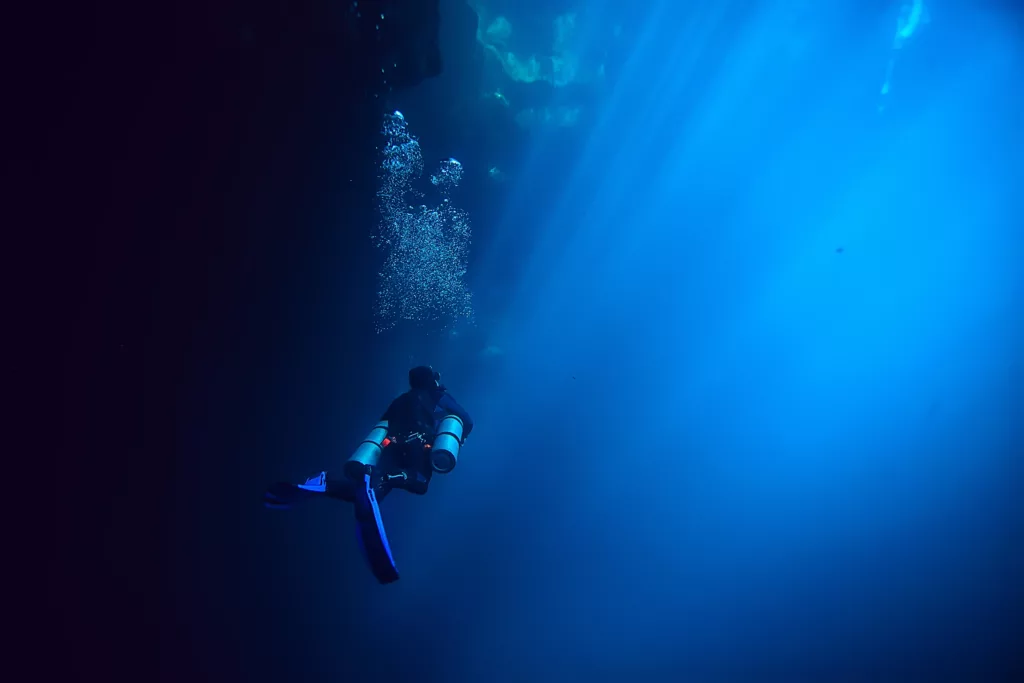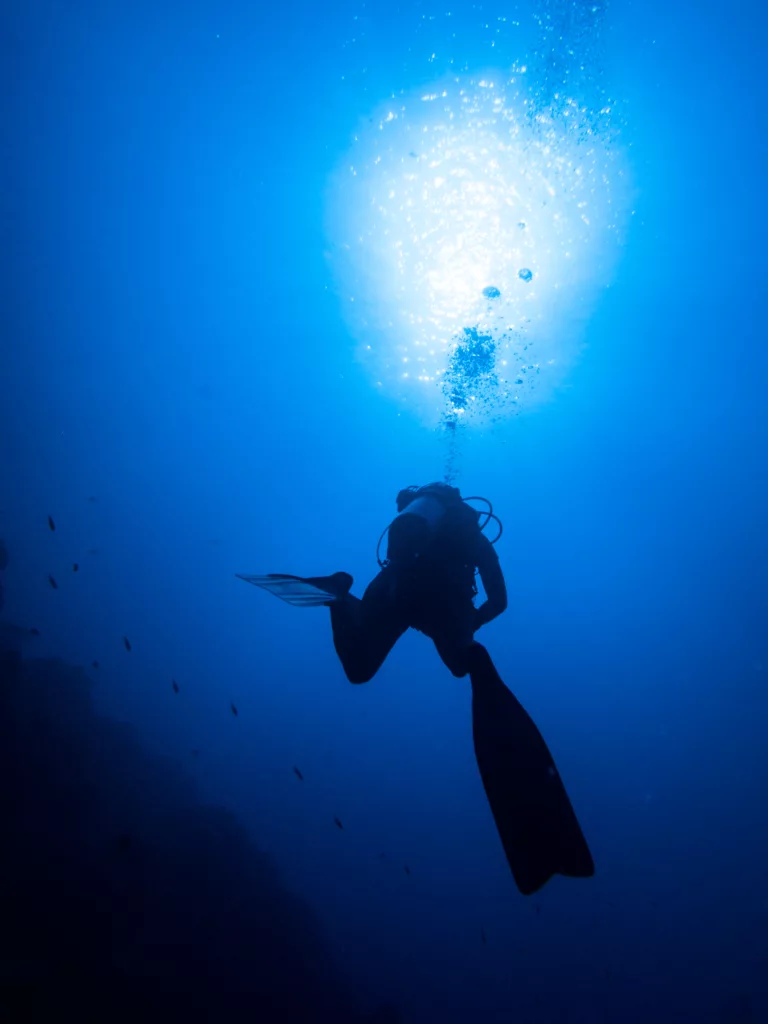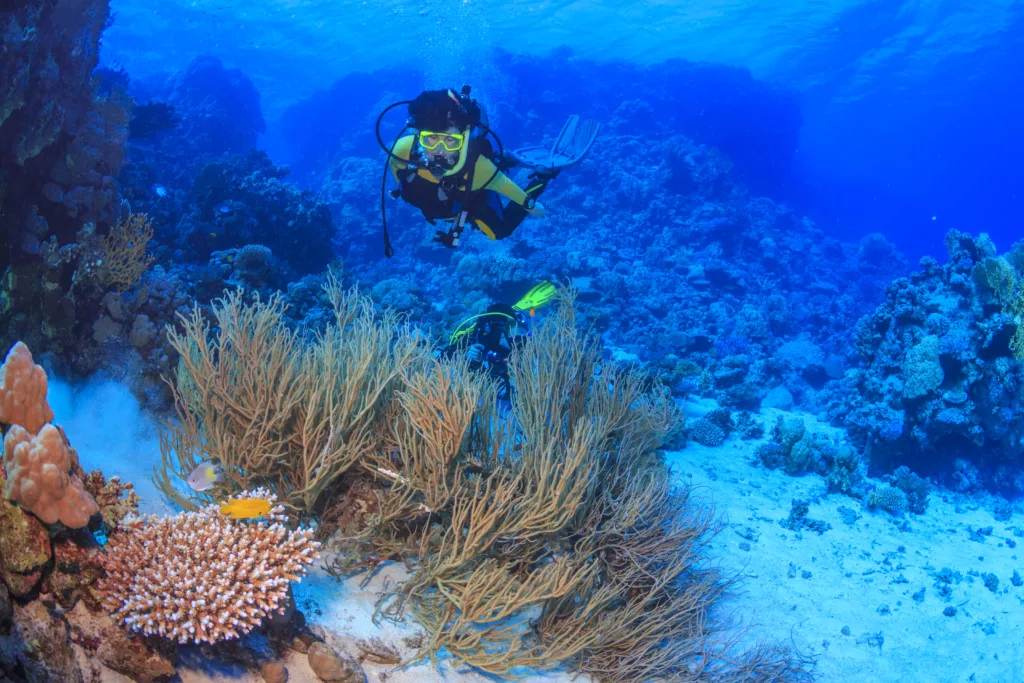Hold your breath, we’re diving deep in this discussions about PADI and SSI – the two prominent options waiting to greet prospective scuba divers. The excitement of exploring underwater worlds is inescapable, especially in a paradise like Bali. Diving in Bali introduces you to the enthralling, pristine world of marine life, and offers unforgettable underwater adventures in some of the most exquisite dive sites that are a must-visit for any diving enthusiast. However, before you can plunge into these thrilling explorations, you’ll need to get certified through a diving course. This post aims to reveal the key differences between PADI and SSI diving courses to help you make an informed choice.
Basics of Scuba Diving: Understanding PADI and SSI
PADI (Professional Association of Diving Instructors) and SSI (Scuba Schools International) represent two prominent pillars in the scuba diving world, providing essential frameworks for diving education, safety, and certification. PADI, renowned globally for its extensive network, has earned a reputation for consistency and thoroughness in its teaching methods. This organization is celebrated for its robust structure, offering a vast range of certifications, from Open Water Diver to Master Scuba Diver Trainer. PADI’s comprehensive curriculum and broad reach make it a popular choice for divers seeking a well-established pathway to scuba expertise.
On the other hand, SSI, known for its flexibility and tailored approach to scuba diving education, has garnered considerable acclaim among divers who prefer a more adaptable training structure. SSI is particularly respected in Europe, where it has built a solid reputation for its individualized teaching methodologies. The organization provides a broad array of courses that can cater to both novice divers taking their first breath underwater and seasoned divers looking to advance their skills.
Both PADI and SSI focus on safety, responsible diving, and marine conservation. They also contribute significantly to the diving community by promoting eco-friendly practices and encouraging divers to take a proactive role in marine conservation efforts. In places like Bali, where the beauty and vulnerability of the underwater ecosystem are profound, these principles are crucial.
Ultimately, whether you choose PADI or SSI, you gain access to a comprehensive diving education that prepares you to explore the underwater world with confidence and responsibility. Each organization provides a diverse selection of courses, allowing you to progress through various levels of diving expertise. Moreover, both PADI and SSI emphasize the importance of sustainable diving practices, ensuring that your journey into the vibrant marine life of Bali and beyond is not only adventurous but also respectful of the natural environment.
Teaching Philosophy: PADI vs SSI

The methodologies employed by PADI and SSI in teaching scuba diving are both diverse and unique. PADI leverages a more traditional and structured approach. Their courses follow a stringent structure wherein each level is priced separately and follows a strict progression. In contrast, SSI showcases a promising degree of flexibility in their teaching philosophy. They allow instructors enough leeway to adapt courses based on the learning curve and needs of the student. This level of customization often entails bundling certain courses together and is often cheaper.
Course Structure and Certification

The course structure of PADI and SSI, while harboring numerous similarities, houses a few distinguishing features. PADI’s course structure is built like a ladder, wherein one course serves as a stepping stone to the next. SSI, on the other hand, pays homage to flexibility yet again, allowing divers to enrich their diving skills and experience through logged dives and specialized courses. PADI values traditional teaching materials, encouraging printed course manuals and supplementing them with online learning. Conversely, SSI marches to the drum of the digital age, making all their learning resources available on online platforms.
Popularity and Recognition

In terms of global reach and recognition, PADI tips the scales with a wider reach. Dive shops generally have PADI as their first choice due to the recognition that the certification commands. SSI, though less renowned, has a strategic advantage with its association with dive shops. The added flexibility SSI provides in their pricing model and teaching methodologies make it popular among dive shops. The beautiful island of Bali, known for its marine biodiversity, accepts both PADI and SSI certifications with open arms. This allows divers the liberty to plunge into the turquoise waters, unfettered by their choice of certification, and unravel the mystical marine life, exhilarating dive sites, and thrilling underwater escapades that Bali has to offer.
Taking the Plunge: Making Your Diving Training Decision
Whether you choose PADI or SSI for your journey into the depths of scuba diving, you’re assured a high standard of training and an entree into a mesmerising underwater world. Both entities offer robust courses that can transform you from a beginner to a certified scuba diver. Ultimately, the decision often comes down to your learning style, budget, and which certification is offered by your local dive shop or chosen training location. Regardless of choice, the wonders of Bali’s diving sites and thrilling exploration of marine life await you.


I’m so excited to start my diving journey in Bali! I’ve heard great things about both PADI and SSI, but it’s good to know the differences between them. Thanks for this informative post!
Hi May Wong, thank you for reaching out and expressing your excitement to start your diving journey in Bali! We’re thrilled to hear that you found our post informative. At Pebble & Fins, we believe that both PADI and SSI are excellent options for scuba diving certification. Our resort is dedicated to providing a comprehensive training facility for local staff and the surrounding community. As you begin your diving journey, we encourage you to revisit us from time to time to join our mission in making a real impact at the local level through education and job opportunities. For any further information or guidance on choosing between PADI and SSI, please don’t hesitate to reach out to us via email at [email protected] or phone at +62 857 3891 8262. We look forward to hearing about your diving adventures in Bali!
I’m a fan of SSI’s online learning resources! It makes it easier to review and learn at your own pace. Great post, looking forward to diving in Bali soon!
Hi Evelyn, thanks for sharing your experience with SSI’s online learning resources! We’re glad to hear that it makes a positive impact on your diving journey. At Pebble and Fins, we’re proud to offer both PADI and SSI certification courses to cater to different learning styles and preferences. Our dedicated team is always here to support you in any way possible. If you have any questions or need more information about our courses, please don’t hesitate to reach out to us at [email protected] or +62 857 3891 8262. We’re excited to hear about your diving adventures in Bali and look forward to welcoming you soon! Best regards, Pebble and Fins Team.
I’ve been diving with PADI in Bali and I have to say their courses are very structured, which is great if you’re a beginner. But I can see how SSI’s flexibility might be appealing too.
Ahmed, thank you for sharing your experience with PADI in Bali! We’re glad to hear that their structured courses helped you as a beginner. You’re right, PADI’s traditional approach can be very effective for those just starting out. However, we also appreciate SSI’s flexibility and adaptability to different learning styles. At Pebble & Fins, we believe that both organizations have their strengths and weaknesses, and it ultimately comes down to personal preference. If you ever need any advice or guidance on choosing the right diving course in Bali, please don’t hesitate to reach out to us at [email protected] or +62 857 3891 8262.